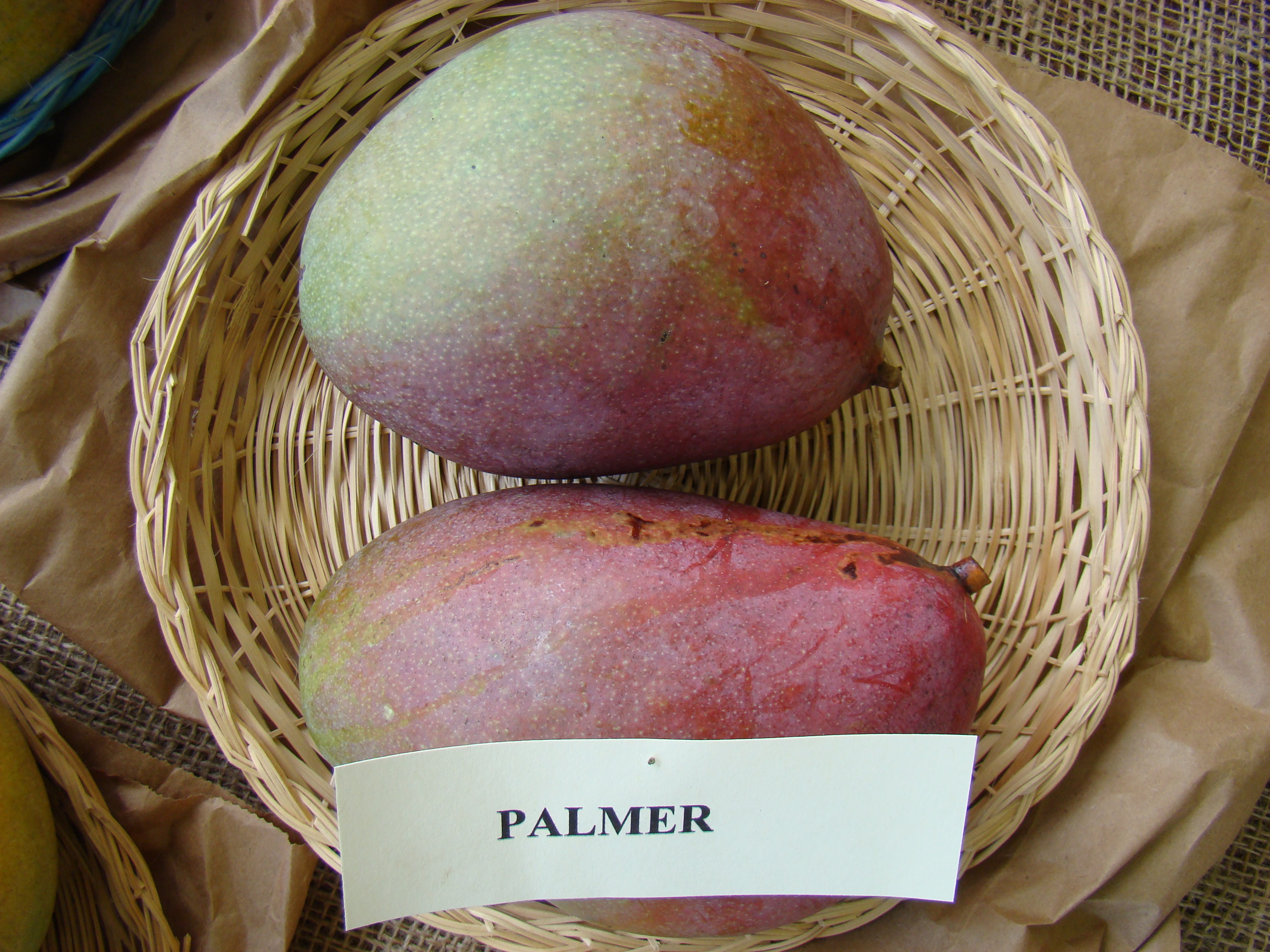Hey, if you're liking what you see thus far, how about leaving us a testimonial? 
Hey, if you're liking what you see thus far, how about leaving us a testimonial? 
 The Palmer mango, originating from Miami, Florida, was first selected in the 1920s and introduced commercially in the 1940s. It has since become popular worldwide, especially in Brazil. This large, oval-shaped mango is known for its thick, greenish-yellow skin that often has a red or orange blush when ripe. The flesh is bright orange, juicy, and low in fiber, making it ideal for fresh consumption as well as for use in smoothies, salads, and desserts.
Palmer mangoes typically weigh between 1 to 2 pounds, and their flesh has a sweet, tropical flavor reminiscent of pineapple, peach, and citrus. The mangoes are harvested from June to August in the Northern Hemisphere and from December to February in the Southern Hemisphere. They are usually picked when still firm and allowed to ripen off the tree, transitioning from green to yellow as they ripen.
The Palmer mango tree is a large, evergreen tree that can grow up to 100 feet tall in optimal conditions. It thrives in tropical and subtropical climates with plenty of sunshine and rainfall. This variety is notable for its resistance to diseases and its ability to produce regular and abundant crops
The Palmer mango, originating from Miami, Florida, was first selected in the 1920s and introduced commercially in the 1940s. It has since become popular worldwide, especially in Brazil. This large, oval-shaped mango is known for its thick, greenish-yellow skin that often has a red or orange blush when ripe. The flesh is bright orange, juicy, and low in fiber, making it ideal for fresh consumption as well as for use in smoothies, salads, and desserts.
Palmer mangoes typically weigh between 1 to 2 pounds, and their flesh has a sweet, tropical flavor reminiscent of pineapple, peach, and citrus. The mangoes are harvested from June to August in the Northern Hemisphere and from December to February in the Southern Hemisphere. They are usually picked when still firm and allowed to ripen off the tree, transitioning from green to yellow as they ripen.
The Palmer mango tree is a large, evergreen tree that can grow up to 100 feet tall in optimal conditions. It thrives in tropical and subtropical climates with plenty of sunshine and rainfall. This variety is notable for its resistance to diseases and its ability to produce regular and abundant crops










